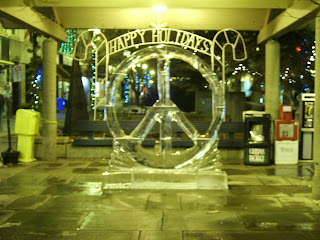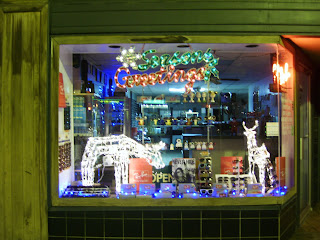VIDEO: Last Friday, Ithacans from the Worker’s Center, the International Socialists’ Organization, Cornell University and Ithaca College gathered on the Commons to support the victory after a six day factory occupation in Chicago as well as make the area aware of the current financial crisis.
SOUND SLIDES: Check out our slideshow to read some “in your face” protest poster messages and chants.
ARTICLE: Obamamania for Financial Mania?
Ithacans are worried the recent election of Obama has replaced concern over the national economy with an overly stimulated hype for a black president.
Michael Amadeo, a junior sociology major at Ithaca College and protester on the streets of Ithaca last Friday, said that he wished people were more active in social movements.
“I’m very scared about the complacency,” Amadeo said. “People were very very happy when Obama was elected…but we need to stay vigilant and realize that this is an opportunity for organizing.”
“We have a stalled economy,” Beachler said. “…The college is worried, they’re worried about how many kids can come back when parents have money invested in mutual funds, bonds and other investments to pay for college.”
Beachler said he believes Obama has a lot of issues on his plate entering his 2009 term, least of which are concerns for domestic policy and the current financial crisis.
“He has to get [the American economy] spiraling upward,” Beachler said, stating the economy is in a downward spiral where people are holding onto their money rather than spending it.
Kay Sweeney, an IC student who partook in the protest, said this is a difficult time for local shopkeepers.
“In terms of the holidays, economists are predicting there is going to be a lot less holiday shopping going on, so that mean it’s a massive blow to this economy because a lot f businesses depend on holiday shopping and are largely seasonal,” she said.
“[Obama]’s not even in office yet!” he exclaimed, “There’s a lot of expectation, he’s trying to tamp it down by saying it’s going to get worse before it gets better.”


